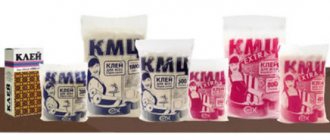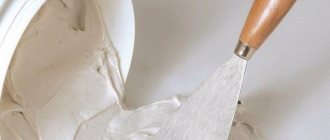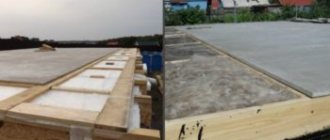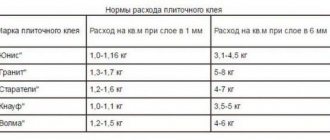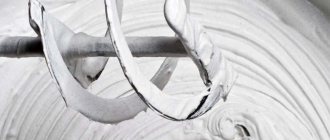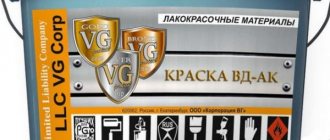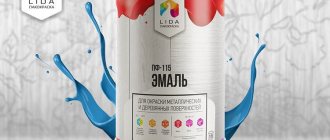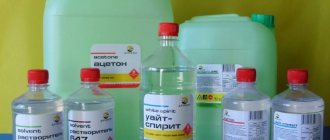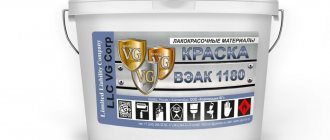Despite rapid technological progress, cement-lime mortar continues to be used in construction. And this is not due to a shortage of other solutions, but to the many advantages of such a composition. It meets all modern standards and requirements, and also has an extended service life.
Advantages
Lime-cement mortar is a special building material with increased strength and elasticity. It can be used both as a binder during the construction of buildings and during finishing work.
The main advantages include the following points:
- The mortar can be used as a masonry mortar or a base for plaster. In the first case, it provides reliable adhesion of blocks or bricks. In the second, it is used for external or internal finishing activities.
- The solution can be used to fill monolithic floors, since lime prolongs the hardening period and increases strength properties. This reduces the risk of cracks and promotes even distribution of the putty.
Penetration ability
The cement-lime mixture is characterized by excellent adhesion to the surface, so it completely fills small depressions and cracks, providing high fixation strength. The solution also has good adhesion, which allows it to be used in conjunction with wood products. So, plaster for wooden sheathing is made using this technology.
Due to its improved strength properties, ductility and resistance to moisture, the mixture is suitable for any finishing work on buildings, both inside and outside. It is in demand for finishing work in the bathroom, on facades or the foundation where it adjoins the blind area.
Specifications
A high-quality solution is created based on the following components:
- Cement mixture.
- Sand.
- Slaked lime.
- Water.
When using lime, it is important to choose only the slaked version. If this is not done, quenching will occur in the solution after adding liquid, forming bubbles. As a result, the plastered surface will begin to crack. This process reduces the quality of the final solution and makes it brittle.
Lime prevents the development of pathogenic bacteria and fungi, and also protects the room from rodents and pests. The composition and properties of modern building mixtures are regulated by GOST standards. This makes it possible to standardize their technical characteristics and verify compliance with requirements.
The document also specifies quality indicators, laying features and conditions for moving solutions. It regulates the properties of masonry mortars, materials for applying plaster and interior decoration, depending on the environment of use.
Proportions for preparing the solution
The quality of the finished composition is influenced not only by the components used, but also by the correct choice of their proportions. Before preparing a cement mortar, it is important to correctly determine the amount of sand, cement, water and crushed stone in accordance with the brand of concrete required for the work.
The mass and volume ratio of ingredients for preparing mortar, depending on the brand of cement, are given in the table.
| Brand | M400 | M500 | ||
| Component proportions* | Proportions for 10 liters of solution | Component proportions* | Proportions for 10 liters of solution | |
| 100 | 1:4,6:7 | 41:61 | 1:5,8:8,1 | 53:71 |
| 150 | 1:3,5:5,7 | 32:50 | 1:4,5:6,6 | 40:58 |
| 200 | 1:2,8:4,8 | 25:42 | 1:3,5:5,6 | 32:49 |
| 250 | 1:2,1:3,9 | 19:34 | 1:2,6:4,5 | 24:39 |
| 300 | 1:1,9:3,7 | 17:32 | 1:2,4:4,3 | 22:37 |
| 400 | 1:1,2:2,7 | 11:24 | 1:1,6:3,2 | 14:28 |
| 450 | 1:1,1:2,5 | 10:22 | 1:1,4:2,9 | 12:25 |
| * – Cement : Sand : Crushed stone, kg | ||||
Properties
Mortars made from cement and lime are characterized by the following properties:
- Mobility.
- Resistance to water from 90%.
- The degree of delamination is up to 10%.
- Operating temperature up to 0°C.
- Medium density.
- Degree of humidity (this indicator is typical for dry mixtures).
When creating a cement-lime mortar, the proportions are selected taking into account the type of surface on which it will be applied, as well as the conditions of their use. In the construction industry there is such a thing as the fat content of the mixture. It is determined by the volume of binder additives that are present in the masonry mortar.
Depending on the fat content, there are 3 groups of solutions:
- Normal. These include a material with universal plasticity that can be used in different environments. Such solutions do not have the problem of shrinkage and cracking of the coating.
- Skinny. They are characterized by minimal shrinkage and can be used for any indoor cladding activities.
- Fatty. They are highly plastic compositions with a high content of binding elements. The solution is intended for masonry.
To change the degree of fat content, special components are added to the composition that affect plasticity. This could be porous sand, which lowers the parameter, or lime, which acts in the opposite direction.
Preparing the solution with a concrete mixer
A concrete mixer will help speed up and simplify the process of mixing concrete. Mechanization of the preparation of construction mixture improves the quality of the solution. This is due to thorough mixing of the ingredients, which is difficult to achieve manually.
Instructions on how to make cement mortar in a concrete mixer:
- The concrete mixer is connected to the network. The required components are poured into a rotating drum. It is important to follow safety rules.
- Water is poured in first. Its volume should be 15-20% less than planned. This will allow you to control the density of the resulting composition.
- Dry cement is poured. Its volume should also be 10-15 percent less.
- The required amount of sand is loaded. The composition is mixed for 3-4 minutes until a homogeneous consistency.
- If necessary, water or cement is added depending on the required thickness.
Mixing time should not exceed 10 minutes. If this is neglected, the finished solution will delaminate. It is recommended to unload the entire prepared mixture from the concrete mixer drum. When preparing the solution, it is important to strictly adhere to the rules; otherwise, due to the low quality of the resulting material, the strength of the walls or foundation being built may suffer.
Density and grades
Cement-lime mortar can have different densities. It depends on the raw materials and the ratio of components. The most commonly used types of materials are:
- With low density - up to 1500 kg/m³.
- With high density - from 1500 kg/m³.
Taking into account proportions, materials are divided into different grades. This can be lime mortar M50, M75, mortar M100, etc. The last 2 grades 50 and 100 are characterized by increased strength and resistance to moisture. The additives from the composition have a homogeneous structure, because they do not contain crushed stone.
Grades 100 and 75 are used in the construction of industrial and civil facilities. The compositions are created on the basis of cement, sand and lime, combined in different proportions.
Surfaces can be plastered with M25 and M50 solutions. They are affordable and easy to manufacture.
Such solutions are in demand at humidity levels above 75%, which is why they are used in the construction of bathhouses and other buildings with high humidity. Lime also fights fungal growths on walls.
Brand M100/M150
Cement mortars M100 and M150 are used as mortars for bricklaying, in the manufacture of expanded clay blocks, and also for pouring high-strength floors. They are considered the most popular mixtures for repair work and reconstruction of buildings. To prepare the batch, clinker and fine filler are used in a ratio of 1:3.6.
On average, component consumption is:
- Portland cement PC (M400 – for M100 solution/ M500 for M150 solution) – 340 kg;
- sand – 1540/1500 kg;
- water – 280/260 liters.
Ready-made solutions correspond to frost resistance classes F75 and workability classes PK3.
Diversity
Plaster lime mortars are divided into several types:
- Basic. Suitable for roughing surfaces and filling defects and recesses.
- Decorative. Designed to color surfaces, change their appearance and create a shimmering effect. Such plasters contain special additives, plasticizers and hydrophobic elements.
- Special. Designed to improve the performance qualities of treated buildings, they perform moisture-proof, sound-proofing and heat-insulating functions.
Dry mixture or DIY composition
The key advantage of cement-lime compositions is their affordable cost. They are cheaper than mixtures based on cement and sand, which is due to less material consumption when applied to different structures.
At the same time, options with sand have less plasticity, since the composition contains different fractions of it and the presence of plasticizers is not provided. The material also does not fill pores well and requires additional leveling.
Mortars of cement and lime are sold in the form of dry mixtures and are produced by different manufacturers. Moreover, they are easy to create with your own hands.
A wide variety of products from different brands are available for sale in Moscow, which differ in different performance properties and operating environment. To choose the appropriate type, you must be guided by the markings on the packaging.
When applying the solution, it is important to dilute it with water in the proportions indicated on the packaging. For more efficient mixing, it is better to use a construction mixer. In the absence of electrical equipment, a primitive trowel and shovel are used.
If the production is done with your own hands, then you need to prepare the raw materials and combine them in the correct proportions, guided by the required brand. In the process of creating a cement-lime mixture, only slaked lime should be used. If it is missing, you will have to pay it off yourself.
Brand M200/M250
Mortars M200 and M250 are recommended for pouring paving surfaces, as well as preparing reinforced concrete belts and floors. Suitable for the construction of brick and block masonry, as well as sealing construction joints and restoration of facades.
Produced from cement and sand in proportions 1:3 (200) and 1.26 (250). For the preparation of mixtures the following are used:
- PC: 420 kg – for M200/ 440 kg – for M250;
- fine filler – 1460/1420 kg;
- sealer – 250 liters.
The building materials have improved technical characteristics: frost resistance – F150 and water resistance W4.
Lime slaking method
When starting to prepare lime, it is important to follow the step-by-step instructions and take care of personal safety equipment.
These include safety glasses and a mask:
- Mix lime and water in a container in a 1:1 ratio.
- When the mixture boils, which will be confirmed by a strong reaction, you will need to add a small amount of liquid so that it completely covers the raw material.
- After this, the composition is thoroughly mixed and covered with a lid.
- The material is kept without use for 14 hours. This process does not require much effort, but it takes a lot of time.
Therefore, most builders buy slaked lime in the store.
If it is necessary to slak lime using the slow and medium slaking method, then you need to adhere to the following guidelines:
- First of all, you need to dig a hole and place a container made of a wooden box with dimensions of 1.5x2 m near it. A damper with a small mesh is placed at the bottom.
- Lump lime is placed at ¼ of the volume. Then a small amount of water is added. When the lumps fall apart into small pieces, you will need to add a little more liquid and mix everything thoroughly.
- After the mixture has been successfully quenched, it needs to be diluted to a thick consistency, remove the damper and drain the solution through a sieve.
- To prevent rapid drying, the mass is covered with clean sand.
Regardless of the extinguishing methods used, it is best to perform actions in a protective suit made of canvas material, gloves and goggles. The mixture should not penetrate open areas of the skin, as this may cause burns.
Beton.ru
| Publication date: 12/05/2004 | Quantity |
The strength of the solution is determined by its brand, i.e.
the ability to withstand a certain compressive load, measured in kilograms per square centimeter. To obtain a solution of the same composition, all components included in it are measured in certain doses, using various dishes or scales. There are lean, normal and fatty solutions. There is a lot of filler in the skinny one, it is inconvenient to work with and does not have the proper strength. A normal solution contains sufficient binder and filler, while a greasy solution contains an excess of binder, which is why it cracks. Fat content is determined mainly in clay and lime solutions using a paddle, which is used to mix it. If the solution does not stick to the oar, but only stains it, it is skinny; if it sticks in separate clots - normal; when the solution strongly envelops the oar, it is greasy. Binders are added to a lean solution, and filler is added to a fatty solution. All materials used to prepare the solution are pre-sifted on a sieve. When preparing mortar for plastering work, use a sieve with 5x5 mm cells, for stone work - with 10x10 mm cells. A solution is prepared immediately from clay or lime paste, and from cement, a dry mixture is first prepared, and then a solution. You can make the mixture in a box; but it’s better on a striker - a wooden shield measuring 2x3 m. Any solution must be prepared carefully. A poorly mixed solution is inhomogeneous, and where it is weaker, structural destruction may begin. Accurate dosing of materials is mandatory. Dry mixtures, such as cement and sand, are best prepared this way. Sand and cement in the form of a bed are poured in layers, which are brought to a total height of 200-300 mm. This bed is shoveled several times until smooth, and then the mixture is sifted through a fine sieve with cells of 3x3 mm, no less.
To prepare the solution, the mixture and water are also measured in doses and thoroughly mixed until completely homogeneous. Excess water results in a thinner solution and, after drying, it is less durable than a thick solution of the same composition. Properly prepared mixtures produce solutions that are homogeneous in composition. They are much easier to install than non-uniform ones.
Materials and solutions for foundations and plinths
These parts of buildings are constructed from durable materials that can serve for a long time without collapsing. Tables 6 and 7 indicate materials and solutions for foundations and plinths under various operating conditions.
Table 6. Solutions for laying foundations and plinths located below the waterproofing layer:
| Cement brand | Soil type | |||
| low-moisture | wet | saturated with water | ||
| cement-lime mortar grade “10” (cement, lime paste, sand) | cement-clay mortar grade “10” (cement, clay dough, sand) | cement-lime and cement-clay mortar grade “25” (cement, lime or clay, sand) | cement mortar grade “50” (cement, sand) | |
| 50 | 1:0,1:2,5 | 1:0,1:2,5 | — | — |
| 100 | 1:0,5:5 | 1:0,5:5 | 1:0,1:2 | — |
| 150 | 1:1,2:9 | 1:1:7 | 1:0,3:3,5 | — |
| 200 | 1:1,7:12 | 1:1:8 | 1:0,5:5 | 1:2,5 |
| 250 | 1:1,7:12 | 1:1:9 | 1:0,7:5 | 1:3 |
| 300 | 1:2,5:15 | 1:1:11 | 1:0,7:8 | 1:4,5 |
| 400 | 1:2,1:15 | 1:1:11 | 1:0,7:8 | 1:6 |
Note:
The compositions of solutions are given in volumetric units.
Table 7. Materials for the underground part of the house and the basement located below the waterproofing layer:
| Materials | Material grade, kgf/cm2 | ||
| Priming | |||
| low-moisture | wet | saturated with water | |
| at the groundwater level at a depth from the ground surface, m | |||
| 3 or more | from 1 to 3 | 1 | |
| Natural stone, weighing more than 1600 kg/m3 (limestone, dense sandstone, granite, diorite, basalt) | 100 | 150 | 200 |
| Natural stone weighing less than 1600 kg/m3 | 50 | 75 | Cannot be used |
| Heavy concrete weighing more than 1800 kg/m3 and products made from it, except concrete based on fuel slag | 75 | 75 | 100 |
| Clay brick of plastic pressing | 100 | 125 | 150 |
| Cement mortar | Application is not justified | 25 | 50 |
| Cement-lime mortar | 10 | 25 | Cannot be used |
| Cement-clay mortar | 10 | 25 | Same |
Rubble concrete is most often used for foundation construction. The filler is usually stone from quarries, coarse gravel, crushed stone, half-brick, broken brick, etc. The filler is laid in layers 20-25 cm thick, spaced along the walls. Each layer is watered with a solution of the desired brand and compacted tightly.
Cement-lime mortar is prepared from cement, lime paste and sand. Lime dough is diluted with water to the consistency of milk and filtered on a clean sieve. A dry mixture is prepared from cement and sand, mixed with lime milk and mixed thoroughly. Adding lime milk increases the plasticity of the solution. Instead of lime dough, you can use clay dough, which is taken in the same quantity. The compositions (in volumetric parts) and grades of cement-lime and cement-clay mortars are given in Tables 8, 9, 10. Both mortars are used both for laying above-ground walls and foundations in dry soils. If underground masonry is carried out in low-moisture soil, then for 1 m3 of sand in cement-lime mortars take at least 75 kg of cement, in cement-clay mortars - 100 kg; in very wet and water-saturated soils - 100 and 125 kg.
Table 8. Composition and grades of cement-lime and cement-clay mortars:
| Cement brand | Solution grade, kgf/cm2 | ||||
| 100 | 50 | 25 | 10 | 4 | |
| Ratio of solution parts | |||||
| 400 | 1:0,2:3,5 | 1:0,7:6,5 | 1:1,9:12,5 | — | — |
| 300 | 1:0,1:2,5 | 1:0,4:5 | 1:1,3:10 | — | — |
| 200 | — | 1:0,2:3,5 | 1:0,7:6,5 | 1:2:16 | — |
| 150 | — | — | 1:0,3:4,5 | 1:0,8:7 | — |
| 100 | — | — | 1:0,1:3 | 1:1,5:10,5 | 1:1,8:13 |
| 50 | — | — | — | 1:0,2:3,5 | 1:1:9 |
Note:
the numbers 1:0.7:6.5 mean that they take 1 part cement, 0.7 parts lime or clay dough and 6.5 parts sand.
Table 9. Mortar compositions for above-ground masonry of buildings with room humidity up to 60% and for laying foundations in low-moisture soils:
| Cement brand | Brand of solution | |||
| 100 | 75 | 50 | 25 | |
| Cement-lime mortars | ||||
| 600 | 1:0,4:4,5 | 1:0,7:6 | — | — |
| 500 | 1:0,3:4 | 1:0,5:5 | 1:1:8 | — |
| 400 | 1:0,2:3 | 1:0,3:4 | 1:0,7:6 | 1:1,7:1,2 |
| 300 | — | 1:0,2:3 | 1:0,4:4,5 | 1:1,2:9 |
| Cement-clay mortars | ||||
| 600 | 1:0,4:4,5 | 1:0,7:6 | — | — |
| 500 | 1:0,3:4 | 1:0,5:5 | 1:1:3 | — |
| 400 | 1:0,2:3 | 1:0,3:4 | 1:0,7:6 | 1:1:11 |
| 300 | — | 1:0,2:3 | 1:0,4:4,5 | 1:1:9 |
Table 10. Compositions of mortars for above-ground masonry with a room humidity of more than 60% and for foundation masonry located below the groundwater level:
| Brand | Brand of solution | |||
| 100 | 75 | 50 | 25 | |
| Cement-lime mortars | ||||
| 600 | 1:0,4:4,5 | 1:0,7:6 | — | — |
| 500 | 1:0,3:4 | 1:0,5:5 | 1:0,7:8 | — |
| 400 | 1:0,2:3 | 1:0,3:4 | 1:0,7:6 | — |
| 300 | — | 1:0,2:3 | 1:0,4:5 | 1:0,7:9 |
| Cement-clay mortars | ||||
| 600 | 1:0,4:4,5 | 1:0,7:6 | — | — |
| 500 | 1:0,3:4 | 1:0,5:5 | 1:0,7:7,5 | — |
| 400 | 1:0,2:3 | 1:0,3:4 | 1:0,7:6 | 1:0,7:8,5 |
| 300 | — | 1:0,2:3 | 1:0,4:5 | — |
| Cement mortars | ||||
| 600 | 1:4,5 | 1:6 | — | — |
| 500 | 1:4 | 1:5 | — | — |
| 400 | 1:3 | 1:4 | 1:6 | — |
| 300 | — | 1:3 | 1:4,5 | — |
Cement mortars are prepared in the following sequence. A dry mixture is first prepared from cement and sand, and for 1 part of cement you can take from 2.5 to 6 parts of sand (depending on the brand of cement). The dry mixture is mixed with water, mixed and used for 1-1.5 hours. Cement mortars are most often used for laying foundations and other structures that are located below the groundwater level. Walls can also be laid on the same mortars. They are quite durable, but very cold. Depending on the brand of binder material and the amount of filler taken in volumetric parts, a cement mortar of one or another brand is obtained (Table 11). The need for cement is determined depending on its brand and the brand of the prepared solution (Table 12).
Table 11. Brand of mortar depending on the brand of cement and amount of filler:
| Cement brand | Solution grade, kgf/cm2 | ||||
| 100 | 50 | 25 | 10 | 4 | |
| Ratio of solution parts | |||||
| 400 | 1:3,5 | 1:6 | — | — | — |
| 300 | 1:2,5 | 1:5 | — | — | — |
| 200 | — | 1:3,5 | 1:6 | — | — |
| 150 | — | 1:2,5 | 1:4 | 1:6 | — |
Table 12. Cement consumption per 1 m3 of sand to prepare a solution of the required grade:
| Cement brand | Solution grade, kgf/cm2 | ||||
| 100 | 50 | 25 | 10 | 4 | |
| Cement consumption, kg | |||||
| 400 | 340 | 185 | 90 | — | — |
| 300 | 435 | 240 | 120 | — | — |
| 200 | — | 350 | 185 | 75 | — |
| 150 | — | — | 230 | 95 | — |
Lime mortar: types and applications
Lime mortar is a special mixture based on slaked lime and sand, combined in a 1:4 ratio. Such values can be changed taking into account the degree of fat content of the lime. The main area of application is leveling unevenness on walls or partitions with low strength.
If load-bearing or key elements of a building are being finished, special types of mortar are used that increase resistance to deformation. Among the key types of lime-based solutions are:
- Lime.
- Lime-gypsum.
- Cement-lime.
For plastering walls
Applying plaster to the surface of walls is a responsible process that requires special skills and preparation. The quality of the coating is determined by compliance with the proportions and production rules.
A large selection of plaster compositions allows you to find an option that best suits the operating conditions. If plaster is created at home, then cement, sand, clay and lime can be used as raw materials.
The lime variety is created on the basis of lime paste and 1-5 parts of sand. The exact proportions depend on the required fat content. During the stirring process, it is necessary to prevent the appearance of lumps, so sand is added in small portions. The mixture can be considered ready only when it reaches optimal fat content.
When making a lime-gypsum base, you need to prepare the following components:
- Gypsum.
- Sand.
- Lime.
The gypsum composition is added to a container of water and thoroughly mixed to a dough-like consistency. After this, the mixture is diluted with lime “dough”. The cooking process takes up to 2 minutes. Subsequent processing is carried out with ST 17 primer or other material with similar properties.
You need to add ingredients in small portions, since the lime-gypsum composition is characterized by rapid setting (5 minutes) and hardening (30 minutes). If you use more liquid than possible, the plaster layer will become loose. A lack of water will lead to the appearance of quick-setting material.
To prepare a high-quality cement-lime composition, you will need to take lime, sand and cement. To begin with, sand is combined with cement, and then a “dough” of lime is added to them, diluted to the consistency of milk. The optimal ratio of components is as follows: 1:1:10 (cement, lime, sand).
Types of solutions
Let's consider the main brands of cement mortars.
Brand M25 and M50
The cheapest and easiest to prepare options are solutions of grades M25 and M50 according to GOST 28013-98. The composition of this lime mixture is quite standard and includes all the necessary substances such as water and filler. To increase wear resistance and improve the characteristics of M25 concrete, plasticizers are added during its production, which increase the setting time of the material, and also ensures a complete absence of delamination. Having such technical characteristics, mortars of grades M25 and M50 in accordance with GOST 28013-98 for brick can guarantee absolute structural strength and resistance to poor conditions, including heavy rainfall.
Brand M75
If you are in doubt about which mortar is best to choose for laying bricks, it is recommended to pay attention to cement mixtures M75, M50 and M25. Combined with high strength, this material has excellent waterproof qualities. It is very difficult to prepare this type of lime mortar at home.
This is explained by the fact that its production uses very thorough mixing, which can only be achieved using special equipment. Weather conditions can also affect the condition of cement. It is highly not recommended to lower the temperature during the period when hardening occurs. In turn, high temperatures can cause all the moisture from the solution to evaporate too quickly, thereby making the concrete brittle.
The main technical characteristics of this brand include:
- amazing moisture resistance;
- resistance to extremely low temperatures;
- mobility.
Brand M75
Along with cement grade M 75 according to GOST 28013-98, cement grade M 100 is also widely popular. Just like M75 and M50, this mortar can be classified as masonry. However, in terms of technical characteristics it is much better. The main quality that distinguishes this product from others is its exceptional water resistance.
Mortar grade m 100 is widely used in the construction of both civil buildings and in the construction of industrial facilities. Another feature of the m 100 solution is that there is no crushed stone in this cement-lime composition. Only special sand for construction needs that meets all quality standards in accordance with GOST can act as a filler.

